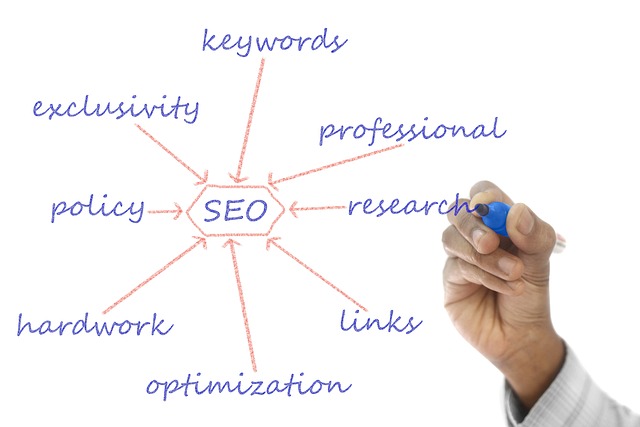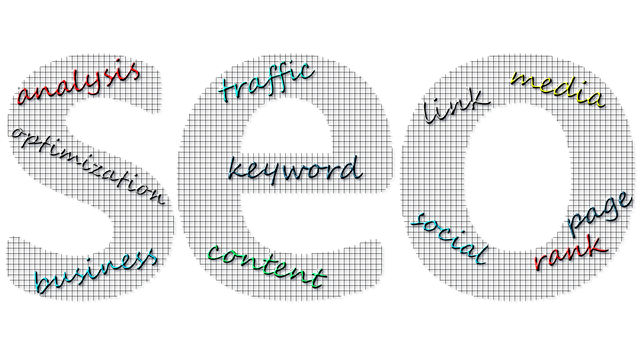In the dynamic landscape of e-commerce, successful businesses understand the paramount importance of On-Page SEO. This strategic approach optimizes product pages, driving organic traffic and boosting sales. This article delves into the core elements of On-Page SEO specifically tailored for e-commerce, including title and description optimization, keyword strategy, enhancing user experience, meta tag utilization, and addressing technical considerations. By mastering these techniques, retailers can elevate their online visibility and create a seamless shopping journey.
Understanding On-Page SEO for E-commerce

Optimizing Product Titles and Descriptions

Optimizing product titles and descriptions is a crucial aspect of on-page SEO for e-commerce sites. Product titles should be concise, yet descriptive, incorporating relevant keywords that customers are likely to search for. Each product title should aim to provide a clear understanding of what the item is, while also reflecting its unique selling points. By including keywords like “buy,” “shop now,” or specific features, you not only enhance readability but also signal search engines about the content of the page.
Descriptions go hand in hand with titles; they offer a more detailed look at the product and should be written to engage and inform potential buyers. Using natural language and incorporating keywords seamlessly ensures that your descriptions are both SEO-friendly and compelling. Highlighting benefits, providing specifications, and adding calls to action can significantly improve the likelihood of conversions, making it an essential part of your on-page SEO strategy.
The Role of Keywords in On-Page SEO

Keywords play a pivotal role in on-page SEO for e-commerce sites, serving as the bridge between searchers’ intent and the content they consume. Integrating relevant keywords naturally throughout your product pages enhances visibility in search engine results. This strategy ensures that both search engines and potential customers understand what your page is about. For instance, using descriptive terms like “buy organic cotton t-shirts” not only attracts shoppers searching for such products but also guides search algorithms to index your page accurately.
Effective keyword placement involves optimizing meta titles, headings, URLs, and product descriptions. Each element should reflect the main topic while maintaining readability. On-page SEO isn’t about stuffing keywords; instead, it’s about creating valuable content that incorporates them organically. This approach fosters a positive user experience, encouraging visitors to engage with your products and reducing bounce rates.
Enhancing User Experience with On-Page Elements

On-Page SEO plays a pivotal role in enhancing user experience, which is crucial for e-commerce success. Elements like well-optimized product titles and descriptions, high-quality visuals, and intuitive navigation not only improve search rankings but also make websites more engaging and user-friendly. When users find it easy to browse, search, and purchase products, they are more likely to convert, leading to higher sales and better business outcomes.
Moreover, On-Page SEO strategies ensure that each page has a clear focus keyword and relevant content, making it easier for search engines to understand the context of the page. This contextual relevance is vital for capturing the right audience and providing them with the most pertinent information. By aligning on-page elements with user expectations and search engine algorithms, e-commerce sites can create a seamless experience that drives engagement and sales.
Utilizing Meta Tags Effectively

On-page SEO is a crucial aspect of optimizing your e-commerce platform for search engines, and meta tags play a significant role in this strategy. Meta tags provide essential information about your web page to both users and search algorithms, helping them understand the content and context of your products or services. By effectively utilizing these tags, you can significantly improve your site’s visibility and click-through rates.
The title tag and meta description are primary components that should be tailored for each page. The title tag, appearing as the page’s title in search results, should include relevant keywords related to the product or service offered. Similarly, the meta description provides a concise summary of the content below, encouraging users to click through. Additionally, using structured data markup can enhance your on-page SEO efforts by providing search engines with more detailed information about products, reviews, and ratings, ultimately enriching the user experience and boosting your site’s ranking potential.
Technical Considerations for On-Page SEO Success

The success of On-Page SEO for e-commerce sites heavily relies on technical foundations. Start by ensuring your site is mobile-friendly, as a majority of users now shop via smartphones and tablets. Fast loading pages are also crucial; even a slight delay can deter potential customers. Implement structured data markup to help search engines understand your content better, resulting in improved rich snippets and click-through rates. A well-designed XML sitemap and robots.txt file ensure that search engine crawlers can access and index your site efficiently. Regularly update your website’s HTML, CSS, and JavaScript to fix any broken links or code issues that could hinder user experience and SEO performance.
Additionally, optimizing images by compressing them without losing quality is essential for page speed. Optimize meta titles and descriptions for each page, focusing on target keywords while keeping them engaging. Use header tags (H1, H2, etc.) to structure content, making it easier for both users and search engines to navigate. Internal linking helps distribute link equity across your site, allowing relevant pages to climb higher in search rankings. Lastly, ensure your site is secure with HTTPS, which not only protects user data but also signals to search engines that your website is trustworthy.
